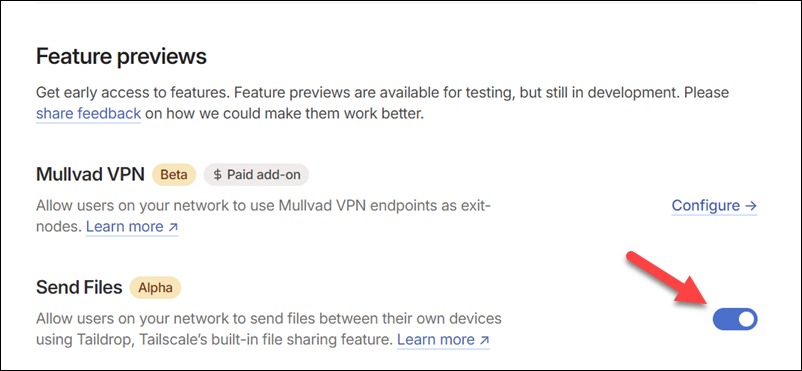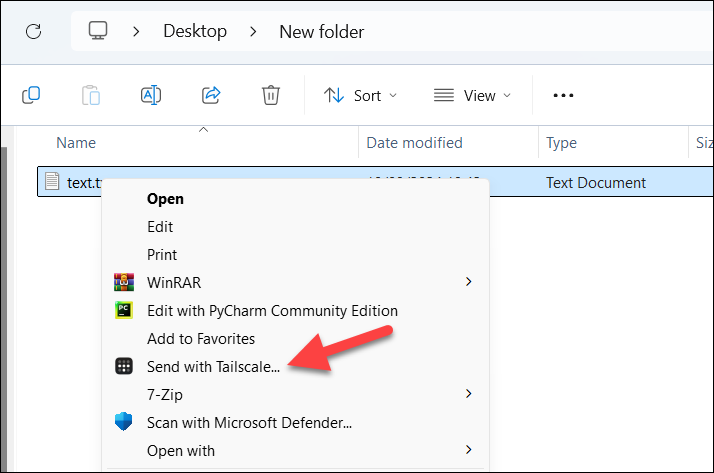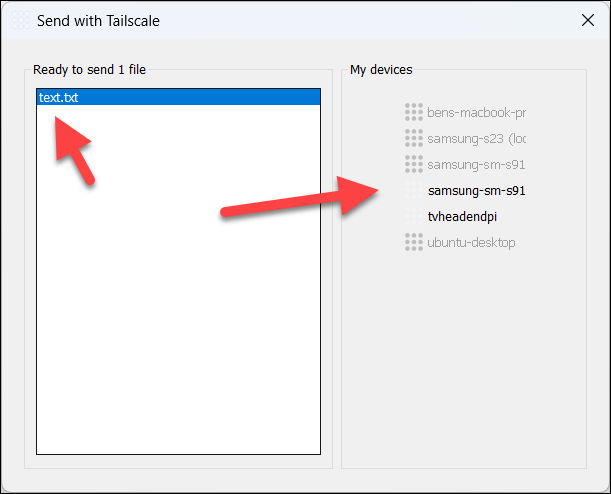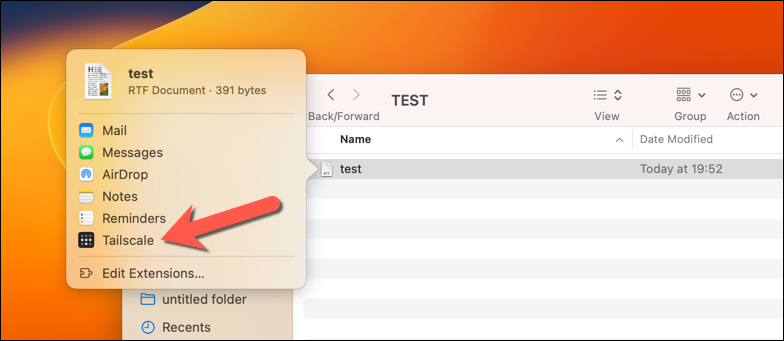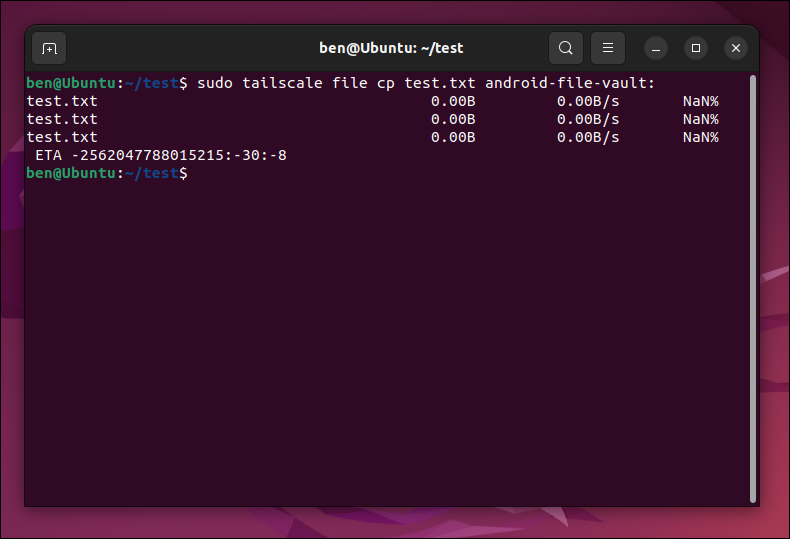I’ve started to back up some of my most important files on an old Android phone, and it’s a more robust solution than you might initially think. Coupled with a Tailscale connection, I now have a portable, secure file vault that I can use anywhere, and setting it up was very simple.
Why an Old Android Phone Makes for the Perfect Offline Storage Device
There are a few main reasons why I decided to use an old Android phone as a mostly offline storage device.
First, any Android smartphone is lockable, so you can restrict who can access it. It can be controlled without any other device just by using the touchscreen, so you don’t need to plug it into your PC for it to work. By nature, the device is portable, so you can also transport it wherever you go, should you need to.
If you’re using a reasonably modern Android device, it should have ample, high-grade internal storage that uses the Universal Flash Storage (UFS) specification, making it a good solution for storing files long-term. UFS is more reliable and faster than a typical flash drive would be and you’ll find it in mid to top-tier devices released over the last few years. Even if your device uses cheaper eMMC, it won’t stop you from using it as an offline storage vault.
The final cherry on top, however, is Tailscale. Tailscale creates a personal peer-to-peer VPN between all of your devices using the Wireguard protocol. Along with other advantages, Tailscale’s Taildrop feature allows you to send files between those devices quickly and securely.
Taildrop is what makes my Android file vault work. From all of my devices, I can send a file to my file vault in just a few clicks. Because only devices on my internal Tailscale network can send files to each other, I don’t need to approve the request, as any files are received on the device automatically. Likewise, if I need a copy of a file from the Android vault, I can send it to any of my devices securely using the same feature.
I use this setup to keep copies of my most important files in a secure place as a secondary backup. I usually keep it with me and leave it switched off as a semi-cold but portable storage device, only switching it on when it’s needed to copy files to it (or from it).
How to Set Up Tailscale on An Old Android Phone
Tailscale requires a bit of initial setup to get your account working if you’ve not used it before. However, you can do all of this from within the Tailscale app on your Android smartphone.
First, head to the Google Play Store and install the Tailscale app on the Android device that you want to use as a file vault. When you open the app for the first time, tap “Get Started” to begin the setup process. Depending on your Android version, you’ll be instructed to authorize Tailscale to set up a VPN connection. Tap “OK” to do this or follow the on-screen instructions for your version of Android to complete the process.
Next, tap “Log In” and create a new account. Even if you don’t have an existing account, you can follow the “sign in” process to set up a new account by typing in your email address. Once you’ve done this, Tailscale will want to connect your Android device to your new Tailscale VPN network. Tap “Connect” to do this.
You’ll see your list of devices once this setup is complete. If you’re a new user, the only device you should see is your smartphone, which will (usually) appear with your device’s model name. You can change this later. Make sure that the slider at the top says “Connected” to ensure you’re connected. If it isn’t, double-check your network connection, then tap the slider to establish the connection.
Once you’ve set up Tailscale on your Android file vault device, go ahead and install it on any other devices you’re using. I have it set up on my Windows PC, my Mac, and on my main smartphone, giving me the ability to transfer files to (and from) any of them. I also recommend changing your device’s name. This will make it easier to spot when you decide to send files to your device. You can do this via the Tailscale dashboard from any device, but it’s probably easiest to do from a full-size web browser on a PC or Mac.
How to Enable Taildrop on Your Tailscale Network
To be able to send files on your Tailscale network, you’ll need to enable Taildrop. The functionality is still in testing, and so it isn’t enabled by default for all users. This is an essential step, so don’t skip it, or you won’t be able to send files to your device.
To do this, open the Tailscale dashboard and click “Settings” from the top menu. Under the “Feature Previews” section, click the slider next to “Send Files” to enable the functionality.
How to Send Files to Your Android File Vault using Taildrop
At this point, your file vault is ready to use. You can send files to it from any other device on your Tailscale network using Taildrop as long as you’re all connected to the same network. Taildrop is still in alpha testing, so it might be subject to changes in the future. The feature supports macOS, Linux, Windows, Android, and iOS, but make sure to check the Taildrop FAQ if you run into any difficulties.
On Windows
For instance, on a Windows PC, you can right-click any file in File Explorer, select “Show More Options”, then click “Send With Tailscale” from the old context menu.
You’ll just need to choose which device to send it to in the pop-up “Send With Tailscale” menu. The files will be sent automatically.
On macOS
For macOS users, make sure to follow the most up-to-date steps in the Taildrop FAQ to enable Tailscale sharing and network access if you’ve not sent files before. Once you’ve done this, you can send files by right-clicking a file in Finder, selecting Share > Tailscale, and choosing your device.
On Linux
On Linux, open a new terminal window and use the following command to send a file to your device. Replace
sudo tailscale file cp path-to-file> device>: You’ll Need to Move Your Received Files
There’s only one small problem I have with this setup. At the moment, any files sent to an Android device will be saved to your Downloads folder, and you can’t change this in Tailscale at the moment.
If you’ve wiped your Android phone first, this isn’t necessarily a big issue if the only files stored in Downloads are files from Tailscale, but it isn’t a clean solution. For organization, I use the Files by Google app on Android to move the files to custom folders.
To move your files, open the Files by Google app and tap the “Downloads” folder under the “Categories” section. Tap the three-dots menu icon next to a received file, then select the “Move To” option to move the file to a new folder. If the folder doesn’t exist yet, tap “Add New Folder” in the options to create the folder first before selecting it, then tap “Move Here” to complete the move.
You can also choose “Move To Safe Folder” to add extra security by moving the files to a folder locked with an additional PIN or password.
Using Your Tailscale Android File Vault
I use my Android file vault as an offline secondary backup, so it isn’t switched on or used all the time. However, I do try to switch it on every week or so just to make sure that I’m still authenticated and that there isn’t any problem with the device or with my Tailscale connection.
How you decide to use your file vault is up to you. I use it to store important files and some photos, but you’re only limited by the amount of storage on your device. As long as you stay connected to Tailscale, you’ll be able to transfer files to (and from) the device to other devices on your network, wherever those devices are.


